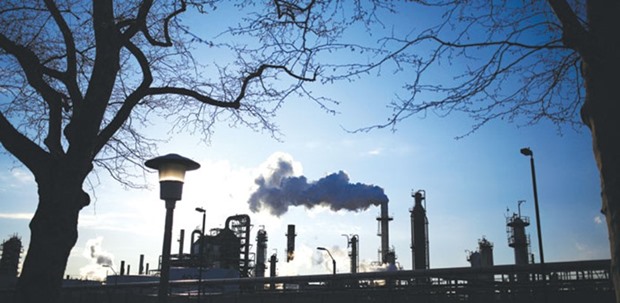Winter has come early for US refiners and blenders. In a summer of discontent with high inventories and an unseasonably weak demand, some refiners have started blending winter grade gasoline earlier than usual to sell later in the year, two trading sources told Reuters last week.
The switchover from summer blends, which are more environmentally friendly and costlier to produce, usually happens in August for sale starting on September 15, the date allowed under US government regulations.
Winter blends are more likely to evaporate in the summer heat and cause smog.
“Why produce more summer grade right now when you can produce something at a cheaper cost and then be prepared to bring that into your supply chain right when the government specifications allow,” said Eric Rosenfeldt, refined products trader at PAPCO.
But mixing more winter gasoline now threatens to worsen the glut later, a risk willingly taken by an industry left with few other choices.
Big imports and a massive overhang in gasoline inventories have turned the market on its head and pushed gasoline stockpiles to the highest levels for this time of the year in a quarter of a century, even as demand from US motorists during the busy summer is near a record.
Independent US refiners are expected to post another quarter of weak earnings en route to possibly the worst year since the shale boom began in 2011.
Summer grade gasoline is harder to produce than winter grade, which is why pump prices tend to rise with the heat.
In the winter, when evaporation is less of a concern, gasoline is made with a higher Reid Vapor Pressure (RVP), a common measure of the volatility of gasoline. This year, looking to cut costs, refiners and blenders are making an early move to mix cheap butane — a cheaper blending component than most other ingredients — to convert the summer barrels into winter barrels, according to the trading sources.
Some see the shift as a sign of a tougher road ahead.
“They made summer grade in winter because winter was crap.
Now they will make winter in summer because summer is crap,” said one US East Coast trader.
Decisions by refiners to ramp up 2015 production cost them in the first quarter of 2016, as profits were hit by an overhang of inventory.
Part of the reason for the shift to winter grade is the anomaly in the structure of the market, traders said.
Historically, gasoline prices weaken as autumn begins in September and refiners start to switch to winter grade gasoline.
But this time, the drop in forward prices is not expected to be as pronounced as in the past six years.
Futures for delivery in September traded at a premium of just 7 cents to those for delivery in October.
That is well below the 20-cent gap at this time last year.
This, along with the overhang in summer-grade gasoline inventory, has motivated refiners to shift to winter gasoline before August, betting that gasoline in storage would satisfy demand for the rest of the summer.
US gasoline futures, which typically soar in July and August, have crashed about 17% from the 2016 high touched in May.
With US gasoline stocks last week at 241mn barrels, 10% more than a year ago and well above the five-year average, more run cuts are likely.
“Simply trimming the amount of crude a refinery processes does very little to reduce gasoline supply,” Energy Aspects said in a note on Thursday.
“Bigger cuts need to come.”

Emissions rise from the Monroe Energy Trainer Refinery in Marcus Hook, Pennsylvania. Independent US refiners are expected to post another quarter of weak earnings en route to possibly the worst year since the shale boom began in 2011.


